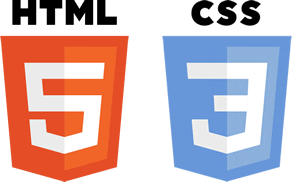
So you’ve put in the hard work, you’ve started blogging, dropping in keywords to take advantage of organic search engine optimization (SEO), and you’re starting to see results. Yay! Buuuut, is that increased traffic due to real, live, people, or is your website getting hit with a bunch of bots? (It’s heartbreaking to contemplate, I know.)
There are multiple avenues to check for spam and we’ll cover them in this article. But if the whole thing feels too complicated, we’re a Charlotte web design company that does more than craft pretty websites; we also specialize in web development. That means we can check the traffic situation for you and assess if you’re getting hit with spam. Contact us, we’re happy to help.
If you’re ready to poke around yourself, keep reading.
First things first, check your metrics
There are four metrics to check to determine whether your increased traffic is due to spam:
- Average session duration
- Bounce rate
- Pages/session
- New users
If you’re using Google Analytics, you can find these metrics under audience > overview.
For the first metric, average session duration, that means you’re able to determine how long a visitor has spent on your website during one session. Spam traffic doesn’t stick around long because it’s not browsing, it’s spamming, aka, lands on a page, and then leaves. If you’ve ever received a weird comment on your blog unrelated to anything else, you know what I’m talking about.
The bounce rate shows the percentage of users who visited one page, didn’t click on anything and then left. Every user who lands on a page and leaves counts as a bounce, which means yeah, people do that too. That’s not necessarily a bad thing because maybe someone googled your business and asked for the email address. Once they found that information, they left. Users will bounce, but if the rate is too low, like less than 2%, that’s a problem. It could indicate there’s an issue on the backend, which you’ll want to contact a Charlotte SEO company like Web Symphonies about. What I mean here is that maybe there’s something weird with the HTML code.
Pages per session means visitors are viewing multiple pages when they visit your website. Spam does not do that. Again, similar to average session duration, bots will view one page and then bounce. If your pages per session rate is low but your increase in traffic is high, I hate to break it to you, but that’s spam.
For the last metric, new users, that sounds like a good thing, right? Who doesn’t want new users? Weeeeell, if your analytics determine that 100% of your visitors are new users, that’s probably spam. Especially if historically speaking you haven’t seen that before.
What to do about spam?
If you’ve determined after looking at your average session duration, bounce rate, pages per session, and new user count that the traffic to your website is likely spam, there are ways to nip that in the bud. The first is to check your referral traffic.
Maybe somebody has linked to you and you’d rather they didn’t. You find that out by going to Google Analytics > Acquisition > All Traffic > Overview > Channels > Referral. You can disavow suspicious referral sources and set up a spam filter to say “no thank you” to spam.
Next, look at your website’s geographics. We’re an N.C. web design company so we expect most of our traffic to come from within North Carolina. Seeing a lot of traffic from Siberia or the Galapagos Islands just doesn’t make sense. Sure, maybe we’re reaching far-flung places, but it’s highly unlikely. At the same time, just because traffic is coming from somewhere outside our target zone doesn’t automatically mean it’s spam. That’s why it’s important to dig a little deeper and look at all the other metrics I listed as well.
If you’ve determined your new traffic is, indeed, spam, you can filter it out. Here’s how:
- Go to the “admin” cog in the bottom-left corner
- Navigate to the “view” section within the settings
- Click “view settings”
- Find the tick box that says “Exclude all hits from known bots and spiders”
- Hit save
Tada! That’s it! The filter will start working moving forward. Make sure you write down when you started filtering out spam so you don’t cry into your cereal bowl over your subsequent “loss” in traffic. It’s a good idea to check your spam traffic every quarter because spam is relentless. It’s kind of like weeds that pop up over and over. And again, if any of this is confusing or your want a professional to take a look, reach out to your favorite Charlotte web design company (us!).
Want to improve your Web Traffic? Contact our professional today at (704) 336-9113



